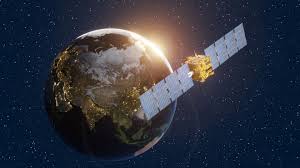Satellites play a crucial role in modern society, providing essential services that impact communication, navigation, weather forecasting, and much more. These sophisticated machines orbit the Earth and even other celestial bodies, offering insights and capabilities that improve daily life and scientific discovery. Below are the ten primary functions of satellites:
1. Communication
Satellites are widely used for telecommunications, including television broadcasts, internet services, and radio communications. They help transmit signals across long distances, enabling seamless global connectivity, particularly in remote areas where terrestrial networks are inadequate.
2. Navigation and GPS
The Global Positioning System (GPS) relies on a network of satellites that provide location and time information. Navigation satellites assist in guiding vehicles, ships, and aircraft, as well as supporting personal GPS devices used in everyday applications like mapping and location tracking.
3. Weather Monitoring and Forecasting
Meteorological satellites collect data on weather patterns, cloud cover, temperature, and atmospheric conditions. This information is essential for weather prediction, disaster preparedness, and climate monitoring.
4. Earth Observation and Remote Sensing
Satellites equipped with advanced imaging sensors monitor environmental changes, track deforestation, analyze agricultural lands, and detect natural disasters such as earthquakes, floods, and wildfires. Remote sensing technology is vital for scientific research and sustainable resource management.
5. Scientific Research and Space Exploration
Scientific satellites study space phenomena, the solar system, and the universe. Observatories like the Hubble Space Telescope have provided breathtaking images of distant galaxies, while probes and rovers rely on satellite data for interplanetary exploration.
6. Military and Defense Operations
Satellites support defense and security by providing intelligence, surveillance, and reconnaissance (ISR). They help monitor potential threats, track movements of military assets, and enhance national security through encrypted communications.
7. Environmental and Climate Monitoring
Climate satellites play a crucial role in studying global climate patterns, tracking changes in ice caps, and measuring greenhouse gas levels. This data is essential in understanding climate change and developing strategies to mitigate its impact.
8. Telemedicine and Remote Sensing for Healthcare
In remote areas with limited medical facilities, satellites facilitate telemedicine by enabling remote consultations, diagnosis, and even surgeries performed with the guidance of specialists in other locations. Satellites also assist in tracking disease outbreaks and pandemics.
9. Disaster Management and Emergency Response
Satellites provide real-time data that help governments and organizations respond quickly to natural disasters. They assist in assessing damage, coordinating rescue operations, and ensuring effective relief distribution after events like hurricanes, earthquakes, and tsunamis.
10. Agriculture and Land Use Monitoring
Satellites help farmers optimize crop management by monitoring soil health, drought conditions, and pest infestations. They also assist in tracking land use changes, urban development, and deforestation, promoting sustainable environmental practices.
Conclusion
Satellites have revolutionized the way we communicate, navigate, predict weather, and even explore the universe. As technology advances, their capabilities will continue to expand, making them an indispensable part of modern society. From aiding in scientific discoveries to improving daily life, satellites play an essential role in shaping the future of our world.
